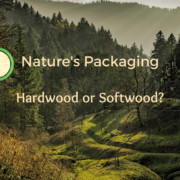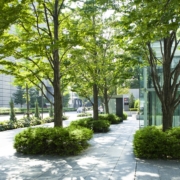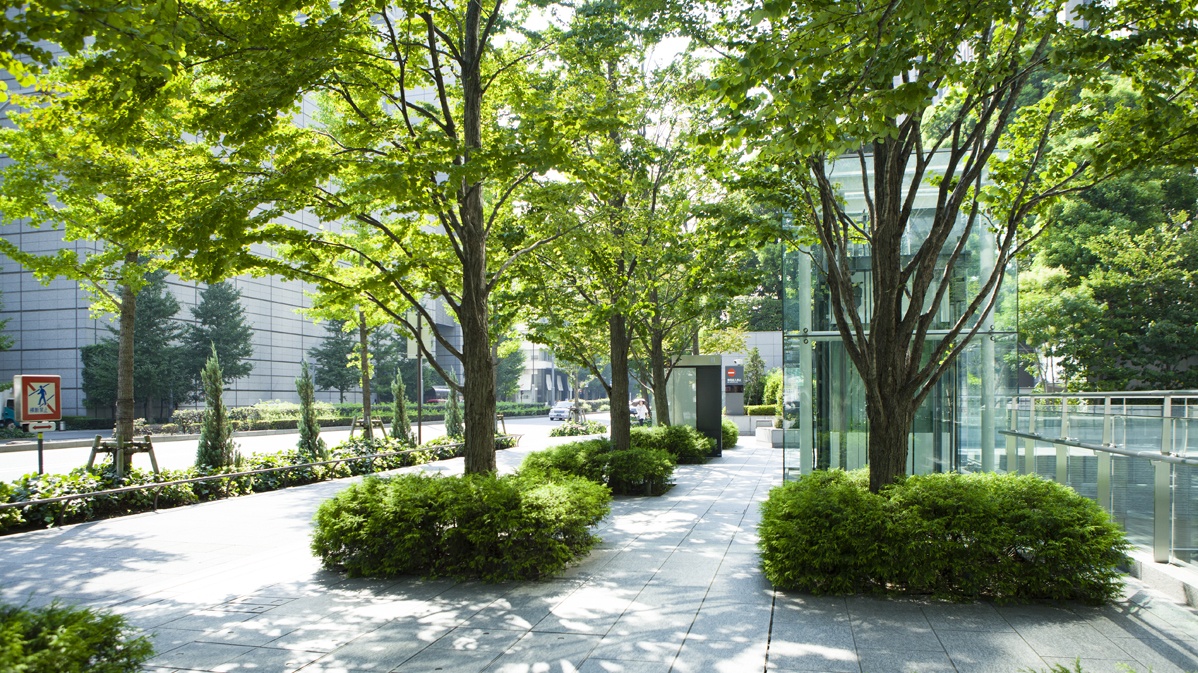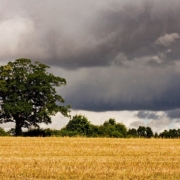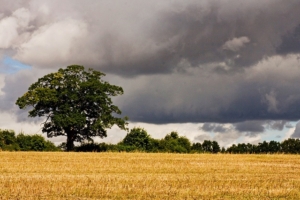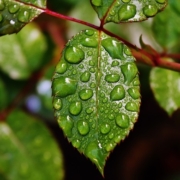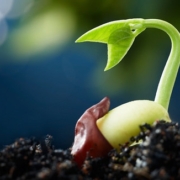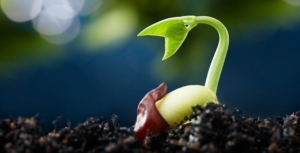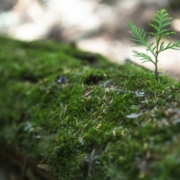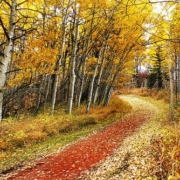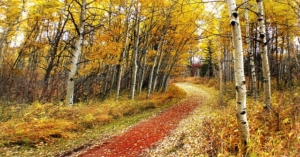Hardwood or Softwood: What’s the Difference?
Of the many forest products used by consumers every day, wood in the form of lumber is the most recognizable. The lumber that we use to build homes or make furniture is produced from softwood or hardwood trees.
The differences between the two types of trees seem obvious from their names, but the actual differences are much more compelling. Interestingly, one basic fact is that “hard” wood and “soft” wood is really based on the botanical properties of a tree rather than the objective hardness of the wood.
Both hardwood and softwood are integral to global industry and infrastructure.
What is a Hardwood Tree?
Angiosperm trees produce what we know as hardwood. Angiosperms are flowering trees with enclosed seeds. The enclosure is often a fruit or nut.
They are usually deciduous, dropping their leaves in the autumn, sometimes with a vibrant display of color. Hardwood trees have broad leaves with fine veins.
Angiosperms grow slowly, which makes their wood dense and heavy. They have a tubular cell structure with pores that produce prominent grain patterns. They are found in tropical and temperate forests all over the world.
Common angiosperm hardwood trees include oak, maple, and walnut.
What is a Softwood Tree?
Softwood comes from gymnosperm trees, which, unlike angiosperms, do not flower. Softwood trees are usually conifers like pine, cedar, and spruce. Their seeds are not enclosed and they’re often in the form of a cone.
Because gymnosperm seeds do not have a fruit or nut enclosure, they spread more easily and in a wider area than angiosperms. Softwood trees also grow faster, have a simpler cell structure, and produce sap.
Gymnosperm leaves are needle-shaped and do not drop seasonally. They’re commonly called evergreen trees. Approximately 80% of timber comes from these softwood trees. The most common group of softwood trees, conifers, is also those most valued for its lumber. Conifers grow all over the world but are especially abundant in cooler climates and higher altitudes.
Do Hardwood and Softwood Trees Store Carbon?
Yes. Through the process of photosynthesis, hardwood trees and softwood trees both remove carbon dioxide from the atmosphere. Carbon dioxide, light, and water transform into sugars including glucose, starch, and cellulose.
This is a form of carbon sequestration, in which carbon is captured from the atmosphere. Trees are natural carbon cleaners. The carbon they store helps offset carbon emissions from other sources.
Carbon is used and stored in every part of a tree, from leaf to root. Starch is found in flowers, fruits, and cones. Glucose aids in respiration, keeping the tree alive. Cellulose, which makes up 40% of wood, supports cell walls. Without cellulose, trees would be unable to stand upright.
An astonishing 50% of the dry mass of a tree is made up of carbon captured from the atmosphere. Harvesting trees and using them for lumber or paper does not release the carbon they’ve stored. Only burning or decay will send it back into the atmosphere.
Though softwood and hardwood trees absorb carbon differently (primarily due to growth rate) they are equally efficient.
What is Made From Hardwood Lumber?
Hardwood lumber is more expensive than softwood because it takes longer for the trees to reach a suitable size for harvest. Hardwood is used for furniture, flooring, cabinets, and musical instruments.
Though hardwood in general is denser and stronger, that is not the case for every species. For example, yew (a softwood) is significantly denser than aspen (a hardwood).
If a project is more decorative than functional, a softer hardwood may be used for its grain pattern rather than a denser softwood that would be more durable.
Hardwood is more difficult to work with than softwood. It is valued by woodworkers for its beauty and strength.
What is Made From Softwood Lumber?
Softwood is the workhorse of the lumber world. It is less expensive and easier to work with and finish. It is used for everything from framing houses to making paper. It’s also used for every single thing hardwood is used for, even instruments.
Softwood is used for Christmas trees, window frames, wood pallets, doors, and plywood. Cedar is used for outdoor decking and siding due to its natural resistance to fungi, insect, rot, and bacteria. Its popularity makes cedar’s price rival that of many slower-growing hardwoods.
Softwood is versatile, renewable, recyclable, and ubiquitous. We’re surrounded by it every day.
Wood is a Renewable and Recyclable Resource
Both hardwood and softwood are incredible, versatile resources. Lumber and other forest products are used in the daily lives of people across the globe.
Wood is one of our most recycled and reused products. Wood furniture is passed down through generations, recycled lumber is used for other projects, and wood pallets are transformed into décor or other items after being reused many times.
Modern logging practices create sustainable, healthy forests. The days of clear-cutting entire old-growth forests are long gone. Today, replanting, selective harvesting, and fire prevention are creating strong, productive forests that benefit both the environment and the economy.
The forest products industry is efficient and dedicated to the health of every aspect of the woodland. From wildlife habitat to soil conservation, forest management strives to keep these amazing resources sustainable for future generations. Private forests currently grow more trees than are harvested.
A harvested tree is used for more than lumber. Every piece of the tree has a use. Small branches, bark, and sawdust can be used as biomass for energy production. This material would otherwise be left to decay, burned on site, or sent to the landfill. In every one of those scenarios, the carbon is released without benefit.
When used as fuel, this material becomes part of the energy grid, reducing reliance on fossil fuels. It is carbon-neutral, releasing no more carbon than had it been left to decay.
The demand for forest products including lumber, paper, wood packaging, and biomass has steadily increased for decades. Rather than harming our forests, responsible woodland management resulted in a 50% increase in trees in the United States since the 1950s.
Responsible management of hardwood trees and softwood trees across the country has made the forest products industry a model of economically beneficial sustainability.

